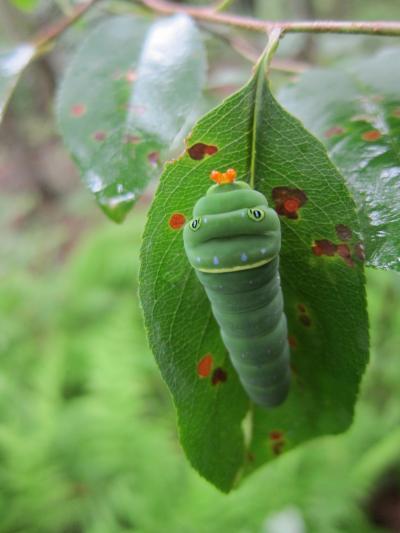Irvine, Calif. — For caterpillars, having a well-rounded diet can be fraught with peril.
UC Irvine and Wesleyan University biologists have learned that caterpillars that feed on one or two plant species are better able to hide from predatory birds than caterpillars that consume a wide variety of plants.
This is probably because the color patterns and hiding behaviors of the caterpillar "specialists" have evolved to allow them to blend into the background flora more effectively than caterpillars that eat many different plant species. Moving among these diverse plant types, the nonspecialists are not as camouflaged, making them easier for hungry birds to spot.
"It's a classic example of risk vs. reward," said Kailen Mooney, associate professor of ecology & evolutionary biology at UC Irvine. "Evolutionarily speaking, a caterpillar must choose between having a broad array of plants to feed upon but facing increased risk of being nabbed by a bird" and having a very limited menu but being less exposed to predators.

A tiger swallowtail (Papilio glaucus) caterpillar feeds on black cherry (Prunus serotina), which was the only plant consumed by this species at the research field site.
(Photo Credit: Michael Singer / Wesleyan University)
Mooney and Michael Singer, associate professor of biology at Wesleyan, led the study, which appears in the early online edition of Proceedings of the National Academy of Sciences this week.
Furthermore, the researchers found that all of this matters a lot to the plants. A species consumed by caterpillars more vulnerable to birds (those with varied diets) benefits from birds removing those caterpillars. In contrast, a plant species fed upon by caterpillars better able to hide from birds (those with highly restricted diets) doesn't benefit as much from birds and must instead defend itself.
Mooney noted that this insight into the secret lives of caterpillars reveals not only the processes driving the evolution of insect diets but also the broad significance of caterpillar feeding for associated plants and birds.